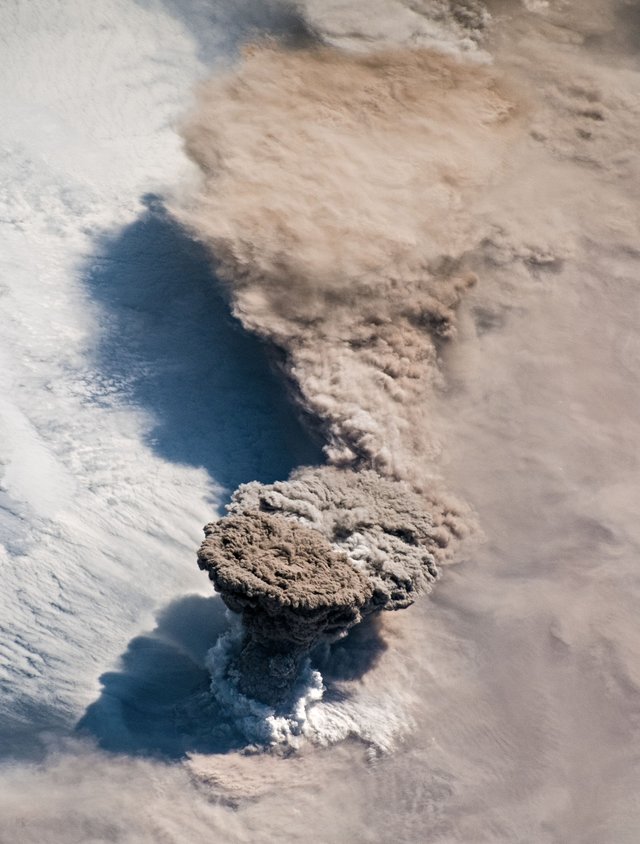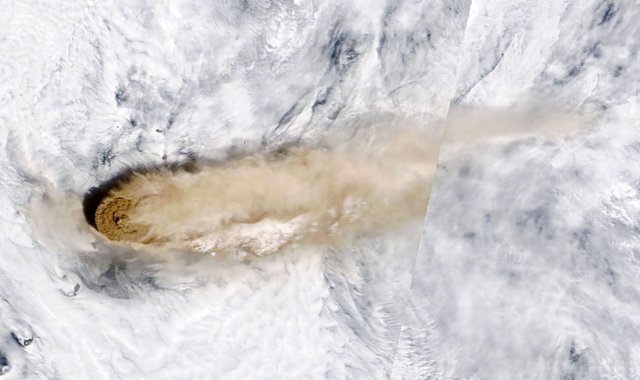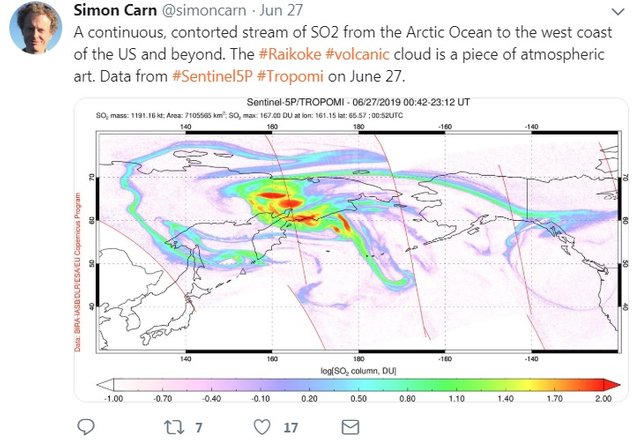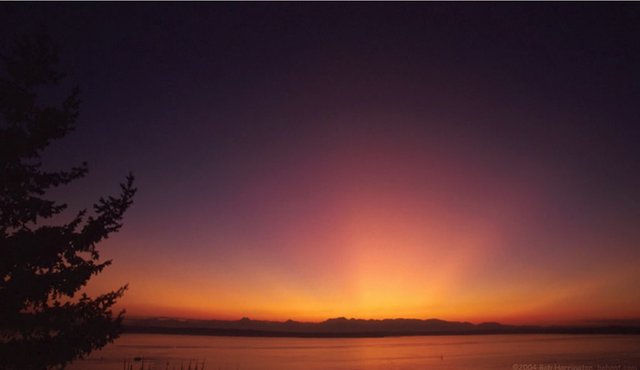Absolutely Stunning Sunset Sky in San Diego Yesterday
We were playing with our daughter on the swing set at dusk when the sky suddenly lit up. The air itself and everything around us seemed to be glowing with a yellowy iridescence even though the sun was going down and getting darker up to that point. I thought to myself, "I've gotta take a look at this sunset", and this is what we saw.
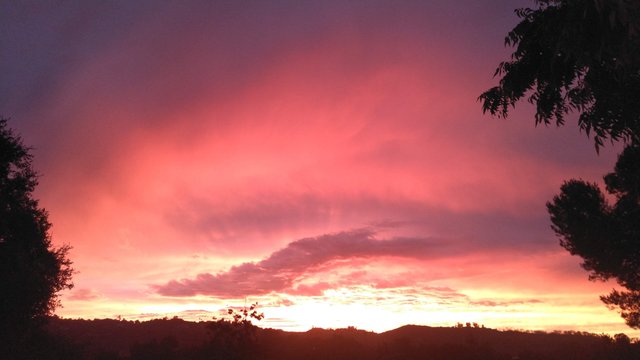
Bear in mind that what you're seeing right now is after the sun had completely disappeared over the mountain. Everything stayed lit up this way for at least a half hour after the sun set, maybe longer, meaning that whatever the sun was reflecting off of was very high up in the atmosphere. This absolutely stunning sunset wasn't the only thing we saw either. Here's what it looked like in the sky in the east.
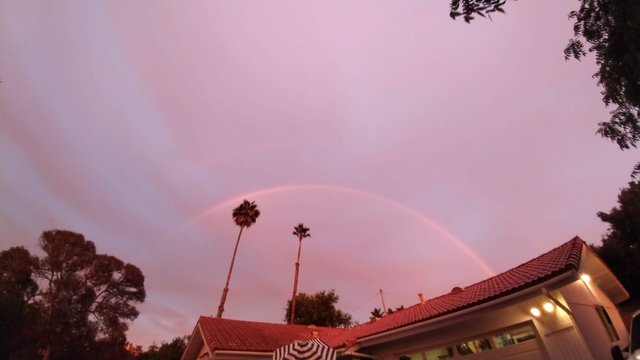
Now I've seen double rainbows like this on occasion, and I don't believe they're particularly rare, but this one was unusual for one particular reason. No rain. Nowhere in the area were we getting any rain at the time. I'm assuming that with all of the haze we had, whatever is making the haze up there is causing the prismatic effect necessary to create a rainbow, but where's the haze coming from and how did it get so high up in the sky?
What you're looking at here are NASA satellite photos of the Raikoke volcanic eruption on June 22, 2019. It's an uninhabited island just south of the Kamchatka Peninsula, part of the Kuril Island chain. I believe that due to the prevailing winds carrying sulfur dioxide (SO2), and some volcanic ash, through the atmosphere, it's having a strange effect on the sky. This tweet from Simon Carn, a volcanologist, illustrates how the SO2 emissions swirled through the atmosphere after they're ejected from the volcano.
As you can see from that visual, the SO2 emissions had already reached the west coast a couple of days prior (June 27) to the taking of my photos (June 29), so it's more supporting evidence for my theory. I have one more piece of photographic evidence here.
The above image was taken near Seattle following the Pinatubo eruption in 1991, and it looks somewhat similar to what we saw in the sky last night at one point. It also happened around the same time of year, so the sun would be in roughly the same point in the sky. Obviously my cell phone camera isn't going to give you the most accurate portrayal of the view, but you get the idea by comparing the two photos. It doesn't exactly confirm that this is what we're seeing here, but it seems the most likely to me at this point. If anyone else has other theories, please feel free to post them below.
I haven't heard anything indicating what the size of the Raikoke eruption is save for the mention that the ash plume is somewhere in the range of 10 miles high, which is into the stratosphere. It is known that volcanic eruptions that reach this level can actually have an effect on the climate in the years after it happens. My understanding is that initially the ash, and continuing later with the SO2, causes increased cloud cover world wide, cooling the earth in what is called albedo effect. The white clouds that result in the atmosphere reflect more of the sun's radiation back into space and prevent the warming that would normally occur at the surface. I'm sure our friends in Europe experiencing the heat wave feel that this effect can't happen soon enough. Anyway, I thought you'd all like the see this and I hope you enjoyed. Steem On!
